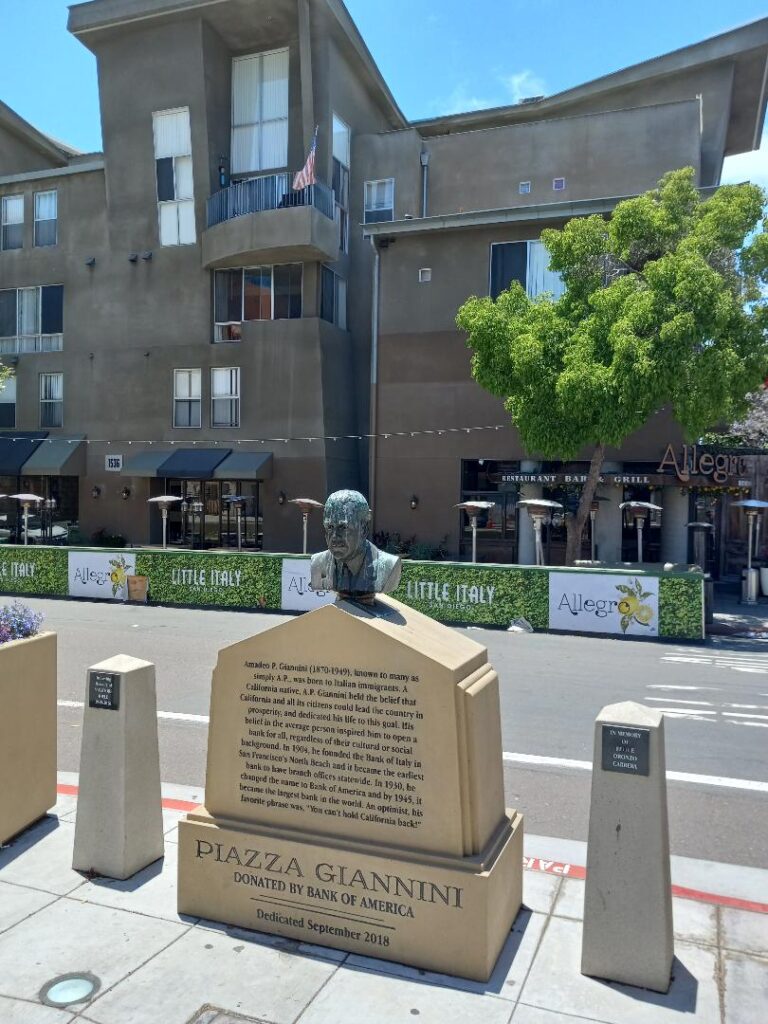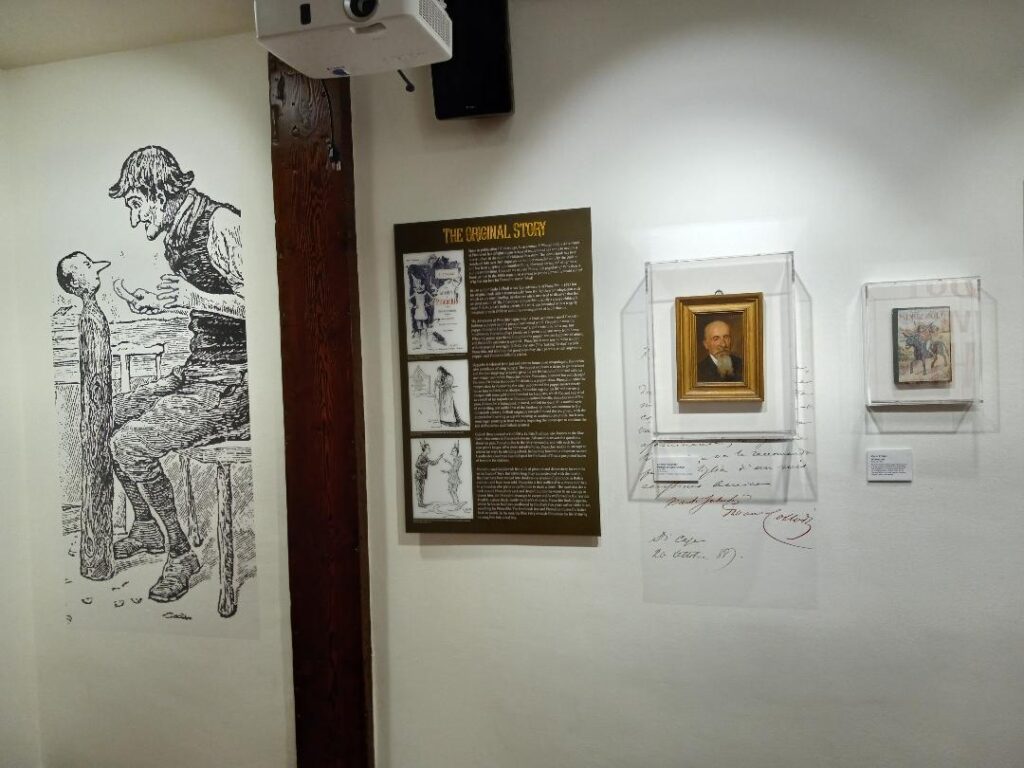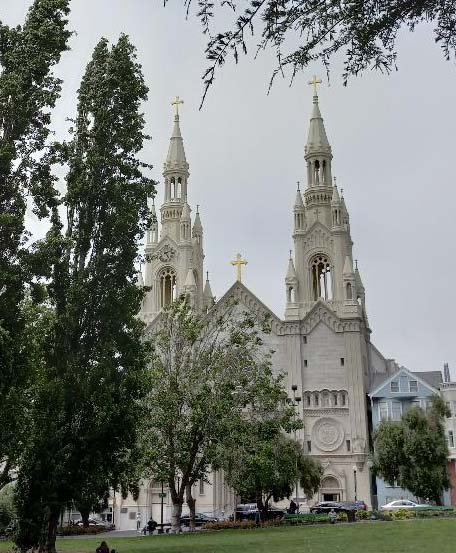To our fellow Americans, we of Italian heritage are simply seen as “cooks or crooks.” (Kudos to my colleague John Mancini for that very apt phrase).
The reason why is very simple: Hollywood media defamation. Or, as the comedian Flip Wilson used to say when dressed up as his feminine character Geraldine (an act which would probably be denounced in today’s stifling environment): “What you see is what you get.” And what our fellow Americans see and get mirrors their beliefs. It is either Guy Fieri or Don Vito Corleone, Giada De Laurentis or Mona Lisa Vita from My Cousin Vinny.
A complex people have been reduced to caricatures.

One of the other big assumptions about Italian Americans is that, despite their numbers over a century ago (5-6 million during the Great Wave, 1880-1920), none of them ventured past the Hudson River. Thus we get what actor Stanley Tucci once described as Hollywood’s idea of the typical Italian American: “Some guy from Brooklyn named Vinny wearing a gold chain.” Yo, Vinny!
But many millions did hop on trains and head for other American cities beyond New York, among them Boston, New Haven, Providence, Chicago, and Columbus. They also headed to mining towns like West Virginia and New Mexico. And they also headed for the biggest state of them all: California.
The Italian diaspora stories of California are in a different league from the urban, industrialized ones of those in major cities. First, Italians came there in the 1840s during the Gold Rush, preceding the Great Wave by some 40 years. And secondly, California was literally wide open both economically and topographically. There was space in which to maneuver and prosper. And the lack of dense Italian enclaves meant less experiences with prejudice or hate.
The first Italian immigrants were mostly Genovesi or Lucchesi, followed later by Sicilians and Neapolitans. The former were responsible for businesses like agriculture, viniculture, and small businesses. The latter transferred their fishing skills to the shores of Monterey and San Diego.
I had the pleasure of visiting the Golden State for a quick trip recently. And my take away? For whatever reason, our paesani out west are doing a much better job of preserving their history than those of us elsewhere in the country.

Italian American Museum of LA
First stop was the Little Italy of San Diego to visit Marco Li Mandri, the dynamic CEO of New City America, a grass-roots organization whose goal back in the early 2000s was to revive this once-thriving area. Like other Little Italies, it almost came face-to-face with the wrecking ball. But, like other Little Italies (such as the “Hill” in St. Louis), it survived with a vengeance. Thanks to Marco and his staff, San Diego’s is part of the fabric of the city. It is not only a place to live and play, but a tourist magnet where visitors do more than just stuff their faces. They learn about great Italian Americans like banker A.P. Giannini and Medal of Honor winner John Basilone via banners and gathering areas. And in 2006, the area drew thousands of people to view the World Cup of Soccer on a large-scale screen. A plaque and picture on the site is a reminder of that magical moment when both Italy and San Diego became world champs.
Then it was on to the Italian American Museum in LA, located around the corner from Union Station in an area which once did serve as the city’s unofficial Little Italy. The modest, two-floor building pays tribute to the unique achievements of Italians both in LA and in California through interactive exhibits. The current one was dedicated to author Carlo Collodi and his sui generis literary creation: Pinocchio, the puppet who becomes a little boy. As Francesca Guerrini, director of programming at the Museum, said, “Pinocchio is the second most-published book in the world, second only to the Bible.”

in San Francisco.
Stop and consider that for a moment — it’s a staggering statement. And, indeed, in one glass case, she showed me translations of the book in various languages, from Chinese to Hebrew. What Italian artists did during the Rinascimento (Renaissance), Collodi did with his simple tale of childhood written in 1883. Once again, Italian genius transformed our planet.
The last part of my journey was a trip to San Francisco, specifically, the North Beach area. As my friend Bob Masullo, retired journalist with the Sacramento Bee, reminded me while taking me on a tour, this Little Italy was literally built by the Italian immigrants, including the sidewalks we walked upon.
Caffe Trieste, one of the first coffee bars in the US, is still there, attracting the same free-thinking crowd as it did via the Beat Poets back in the 1950s. Speaking of which, there is now a street sign dedicated to the poet Lawrence Ferlinghetti, whose famous City Lights Bookstore remains a beacon. Sts. Peter and Paul Church, where baseball great Joe DiMaggio (a San Francisco native) and new wife Marilyn Monroe took post-City Hall marriage photos, towers over nearby Washington Park. Across from the park is the Italian American Athletic Club, founded in 1917, continuing its function as a place where Italian Americans can celebrate their culture. And further south from there is yet another church: St. Francis of Assisi, made a shrine in 1999. St. Francis is both the patron saint of Italy as well as the namesake for the City by the Bay.
The irony has never been lost on me that one of the earliest supporters of Hollywood was the aforementioned A.P. Giannini, whose Bank of America provided loans to early movers-and-shakers like Walt Disney. One wonders what Giannini would think if he could see how his generosity has been rewarded by an industry which routinely portrays Americans of Italian heritage as losers, thugs, and bimbos rather than as titans of American business.
Luckily for us, we have camerati on the West Coast heroically struggling to make our true stories heard. Sempre avanti! -BDC

Great information about the accomplishments of Italians in California.
I am sorry to say that too many Italian Americans are part of the problem. Too often when you pointed out that a movie reflects our Italian heritage in a negative light, they will say lighten up. Many will go to see those movies, supporting negative images. No, I say do your research and see long run harm Hollywood has done to our Italian heritage and culture image!
its interesting too, aside from those with roots in the Boot that were part of the Spanish Empire (and there were many) the West saw a significant influx of Italian immigrants from New Orleans who made their way west and fanned up the Mississippi, Some settling in San Jose, Denver and other farming, railroad and mining communities along the way.. eventually reaching Northern Mexico….I recall a couple of years ago a Mexican of Italian descent was running for the presidency..stopped in the process by an assassin’s bullet. Likewise, a friend cracked a family secret, and a discovery of the world of prohibition and the Carlino family in Southern Colorado. He wrote a book about his discoveries…and how he ended up in San Jose… Interesting too, is the symbiotic relationship between the fruit and grape growers and shipping to the consumers in the East. More than now the economic giants were the canneries, many founded and owned by Italian Americans that provided their products to the nation..there were very few contadini who did not spend time working in those canneries. And to add, the San Francisco Opera is celebrating its 100 years….the original capital for the first opera seasons were put up by Gaetano Merola, and his paesani…many were Sicilian crab fisherman….on and on…..The Museo Italo Americano in San Francisco has a special exhibit on the Italian roots of the SF Opera..
I had to email the Italian American Museum in LA a few years ago. They had some memorabilia of racist movies and TV shows. If the Institute can keep any eye on them, it would be great.